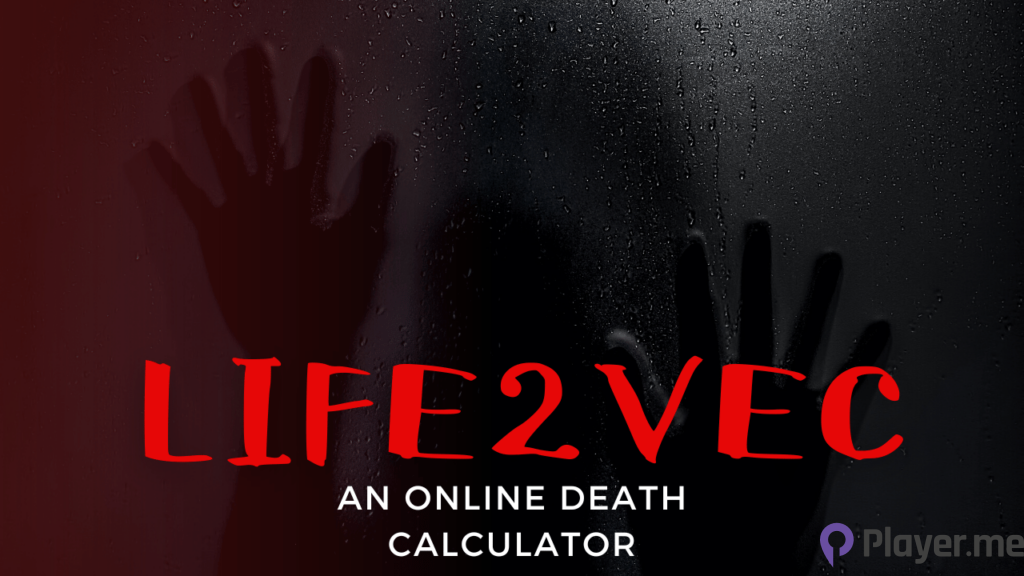A team of researchers led by Sune Lehmann are developing a new AI death calculator algorithm called Life2vec.
According to Lehmann, a professor of networks and complexity science at the Technical University of Denmark, they developed Life2vec using selective information from the data of 6 million Danish people supplied by the government, including their health history, residence, income and profession.
In an interview, Lehmann stated: “We use the technology behind ChatGPT (Something called transformer models) to analyse human lives by representing each person as the sequence of events that happens in their life.” Then, Life2vec will predict a person’s passing based on factors like income, profession, and medical records.
The Foundation Behind Life2vec
Initially, Life2vec was not an AI death calculator but a tool to assimilate information about people’s lives in sentences. In their research paper, the researchers wrote that Life2vec produced sentences such as: “In September 2012, Francisco received 20,000 Danish kroner as a guard at a castle in Elsinore” before evolving to capable of building “Individual human life trajectories.”
Lehmann added: “The whole story of a human life, in a way, can also be thought of as a giant long sentence of the many things that can happen to a person.”
Eventually, the researchers began analysing aspects of a person’s life story between 2008 and 2016, with the model seeking patterns in the data. For example, they examined a heterogeneous subject population of around 6 million Danish people of different sex and age between 2008 and 2020.
Then, they used Life2vec to predict which subjects would live at least four years after January 1, 2016. The result was an astonishing 78% accuracy.
Life2vec Can Predict Almost Anything
In addition to predicting death, the Life2vec model can “Predict almost anything.” Lehmann highlighted that this AI model can calculate life outcomes by delving into a person’s past and emphasised that his research team used a unique program to predict people’s personalities.

“The scale of our dataset allows us to construct sequence-level representations of individual human life trajectories, which detail how each person moves through time. We can observe how individual lives evolve in the space of diverse event types (Information about a heart attack mixed with salary increases or information about moving from an urban to a rural area).”
As for why the team ventured into calculating a person’s demise, Lehmann answered: “We predicted death because it’s something people have worked on for many years (For example, insurance companies), so we had a good sense of what was possible.”
Is Life2vec Available for Public Use?
No. Lehmann has strongly advised providing the model for public use to protect the privacy of those whose information was used. He explained that they had not once told participants their predictions as it would be highly irresponsible to disclose info and factors, with some participants living shorter lives due to mental health or physical health conditions.

However, Lehmann stated they are finding solutions to make Life2vec more open. In his interview with the Daily Mail, he mentioned: “We are actively working on ways to share some of the results more openly, but this requires further research to be done in a way that can guarantee the privacy of the people in the study.
Tina Eliassi-Rad, an American computer scientist and co-researcher on the model, mentioned that Life2vec may not function well outside of Denmark, and the model’s intended purpose is to track societal trends, not predict individuals’ outcomes. “Even though we’re using prediction to evaluate how good these models are, the tool shouldn’t be used for prediction on real people as real people have hearts and minds.”
Is It Beneficial for People to Know When They Die?
Besides publishing their research, Lehmann’s second objective was to shed light on the development of AI and what should be predicted as people know they are “Detailed predictions about human lives happening, but it is all done behind closed doors.”
Some examples are research on blood and other physical and medical features to make predictive forecasts. Art Caplan, a professor and founding head of the division of bioethics at New York University Langone Medical Center, stated the AI death calculator will be the start of a complicated road as consumers will inevitably get information regarding their health.
“What’s unique here is it’s using social employment and public record information, in combination with health information, to make predictions and never having met anybody in the study. These algorithms are starting to take away things we normally don’t know. It has upside and could prevent deaths, but it’s got a real existential threat of taking all the unknowns out of life, which is not necessarily a good thing.”
For more AI-related articles and year-ending recaps of your favourite genres, follow our Facebook and Twitter pages for exclusive news on the trending topics dominating your feed.
Author Profile
Latest entries
 GAMING2024.06.12Top 4 Female Tekken 8 Fighters to Obliterate Your Opponents in Style!
GAMING2024.06.12Top 4 Female Tekken 8 Fighters to Obliterate Your Opponents in Style! NEWS2024.03.18Elon Musk’s SpaceX Ventures into National Security to Empower Spy Satellite Network for U.S.
NEWS2024.03.18Elon Musk’s SpaceX Ventures into National Security to Empower Spy Satellite Network for U.S. GAMING2024.03.17PS Plus: 7 New Games for March and Beyond
GAMING2024.03.17PS Plus: 7 New Games for March and Beyond GAMING2024.03.17Last Epoch Necromancer Builds: All You Need To Know About It
GAMING2024.03.17Last Epoch Necromancer Builds: All You Need To Know About It





